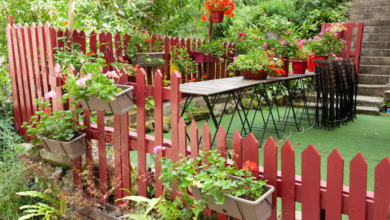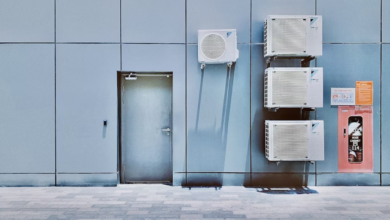How to Weatherproof Your Storage: Ultimate Moisture Control Guide

Proper weatherproofing is essential to protect your stored belongings from moisture, which can cause mold, warping, and damage. Temperature fluctuations can worsen these issues, but with the right strategies for moisture control, you can keep your items in great condition. This guide covers how to identify risks and apply effective protection techniques.
Understanding Environmental Threats to Your Stored Items
Before you can effectively protect your belongings, you need to understand what you’re protecting them from. The main culprits that threaten stored items are more interconnected than you might realize.
Humidity and Moisture
High humidity levels create an environment where mold, mildew, and rust thrive. Even in seemingly dry conditions, condensation can form when temperatures fluctuate, creating pockets of moisture that can damage your items. Ideal humidity levels for storage should stay between 30-50%.
Temperature Fluctuations
Extreme temperature changes cause materials to expand and contract repeatedly. This process can crack plastic containers, warp wooden items, and create gaps in packaging that allow moisture to enter. Consistent temperatures help maintain the integrity of both your items and their protective packaging.
Pest Infiltration
Rodents and insects are attracted to storage areas, especially those with inconsistent climate control. These pests don’t just damage items directly—they also bring moisture through their waste and can chew through protective barriers you’ve carefully installed.
Air Quality Issues
Poor ventilation can trap humid air and create stagnant conditions that promote mold growth. However, too much unfiltered air circulation can introduce dust, pollutants, and additional moisture from outside sources.
See also: Steps Toward a More Energized and Joyful Life
Preparation is Key: Getting Your Items Storage-Ready
Proper preparation before storage can prevent most moisture-related problems. This crucial step often determines whether your weatherproofing efforts will succeed.
Start by thoroughly cleaning all items before storage. Dirt, oils, and organic residues attract moisture and pests. For fabric items, ensure they’re completely dry—even slightly damp clothing can create humidity problems in sealed containers.
Sort your items by material type and vulnerability level. Keep moisture-sensitive items like electronics, paper documents, and leather goods separate from items that might retain moisture, such as sports equipment or garden tools.
Invest in quality protective wraps and containers. Plastic sheeting, moisture-barrier bags, and airtight containers form your first line of defense. For valuable items, consider vacuum-sealed bags that remove air and create an additional barrier against environmental threats.
Selecting the Right Storage Solution
Your choice of storage location significantly impacts your weatherproofing success. Each option comes with distinct advantages and challenges.
Climate-Controlled Storage Facilities
Professional storage facilities with climate control offer the most consistent environment for your belongings. These facilities maintain steady temperature and humidity levels year-round, eliminating many weatherproofing challenges. However, they come at a premium cost and still require proper preparation and container selection.
Traditional Storage Units
Standard storage units without climate control are more affordable but require more extensive weatherproofing measures. These spaces often experience significant temperature and humidity fluctuations, making proper preparation and ongoing maintenance essential.
Home Storage Solutions
Basements, attics, and garage storage cabinets like those in Park City offer convenience but present unique challenges. These spaces often have poor climate control and may be more susceptible to pest infiltration. However, they allow for easier monitoring and maintenance of your weatherproofing systems.
DIY Weatherproofing Techniques That Work
Effective DIY weatherproofing combines multiple strategies to create redundant protection against moisture and environmental threats.
Container Sealing and Selection
Choose containers with tight-fitting lids and consider adding weatherstripping around edges for extra protection. Clear plastic containers allow you to monitor contents without opening them, reducing exposure to humid air during inspections.
For cardboard boxes, wrap them completely in plastic sheeting or place them inside larger plastic containers. Never place cardboard directly on concrete floors, as concrete can wick moisture upward.
Desiccant Use and Placement
Silica gel packets, activated charcoal, and other desiccants absorb excess moisture from enclosed spaces. Place multiple small packets throughout containers rather than relying on one large packet. This ensures more even moisture control and provides backup if one packet becomes saturated.
Replace or reactivate desiccants regularly, as their effectiveness diminishes over time. Many types can be recharged by heating them in an oven, making them a cost-effective long-term solution.
Strategic Item Arrangement
Arrange items to promote air circulation while preventing moisture accumulation. Keep containers slightly elevated off floors using pallets or shelving. Leave space between boxes and walls to allow air movement and make inspection easier.
Place more moisture-sensitive items in the center of your storage area, surrounded by less vulnerable items that can act as a buffer against temperature fluctuations.
Advanced Weatherproofing Strategies
For valuable items or challenging storage conditions, advanced weatherproofing techniques provide additional protection layers.
Vapor Barriers and Professional Sealing
Install vapor barriers on walls and floors in storage areas to prevent moisture infiltration from surrounding materials. Professional-grade plastic sheeting with sealed seams creates an effective barrier against humid air and condensation.
For extremely valuable items, consider professional vacuum sealing or nitrogen-filled containers that completely eliminate oxygen and moisture from the storage environment.
Dehumidification Systems
Electric dehumidifiers can maintain optimal humidity levels in enclosed storage spaces. Choose units appropriate for your space size and ensure proper drainage setup. Some models include built-in hygrometers and automatic shut-off features for hands-free operation.
For areas without electricity, rechargeable dehumidifiers or large-capacity desiccant systems can provide similar benefits with periodic maintenance.
Professional Pest Control Integration
Establish regular pest control measures that won’t compromise your moisture control efforts. Many pest control treatments can increase humidity or leave residues that attract moisture, so coordinate these efforts carefully.
Seal entry points with materials that provide both pest and moisture barriers. Steel wool combined with expanding foam creates an effective barrier against both rodents and air infiltration.
Regular Maintenance for Long-Term Success
Even the best weatherproofing system requires ongoing attention to maintain effectiveness over time.
Schedule regular inspections every 3-6 months, checking for signs of moisture infiltration, pest activity, or container deterioration. Look for condensation on container walls, musty odors, or changes in item appearance that might indicate environmental problems.
Clean and replace weatherproofing materials as needed. Desiccants lose effectiveness, seals degrade, and containers can develop small cracks that compromise protection. Maintaining a replacement schedule prevents small problems from becoming major damage issues.
Document your storage system with photos and notes about container contents and weatherproofing measures. This information helps track which strategies work best for different types of items and storage conditions.
Conclusion
To protect stored items from weather and moisture, use proper preparation, layered safeguards, and regular maintenance. Focus on valuable or vulnerable items first to ensure long-term preservation.




